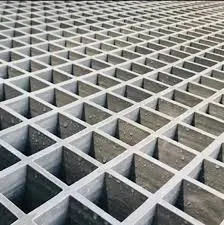
-
 Afrikaans
Afrikaans -
 Albanian
Albanian -
 Amharic
Amharic -
 Arabic
Arabic -
 Armenian
Armenian -
 Azerbaijani
Azerbaijani -
 Basque
Basque -
 Belarusian
Belarusian -
 Bengali
Bengali -
 Bosnian
Bosnian -
 Bulgarian
Bulgarian -
 Catalan
Catalan -
 Cebuano
Cebuano -
 China
China -
 China (Taiwan)
China (Taiwan) -
 Corsican
Corsican -
 Croatian
Croatian -
 Czech
Czech -
 Danish
Danish -
 Dutch
Dutch -
 English
English -
 Esperanto
Esperanto -
 Estonian
Estonian -
 Finnish
Finnish -
 French
French -
 Frisian
Frisian -
 Galician
Galician -
 Georgian
Georgian -
 German
German -
 Greek
Greek -
 Gujarati
Gujarati -
 Haitian Creole
Haitian Creole -
 hausa
hausa -
 hawaiian
hawaiian -
 Hebrew
Hebrew -
 Hindi
Hindi -
 Miao
Miao -
 Hungarian
Hungarian -
 Icelandic
Icelandic -
 igbo
igbo -
 Indonesian
Indonesian -
 irish
irish -
 Italian
Italian -
 Japanese
Japanese -
 Javanese
Javanese -
 Kannada
Kannada -
 kazakh
kazakh -
 Khmer
Khmer -
 Rwandese
Rwandese -
 Korean
Korean -
 Kurdish
Kurdish -
 Kyrgyz
Kyrgyz -
 Lao
Lao -
 Latin
Latin -
 Latvian
Latvian -
 Lithuanian
Lithuanian -
 Luxembourgish
Luxembourgish -
 Macedonian
Macedonian -
 Malgashi
Malgashi -
 Malay
Malay -
 Malayalam
Malayalam -
 Maltese
Maltese -
 Maori
Maori -
 Marathi
Marathi -
 Mongolian
Mongolian -
 Myanmar
Myanmar -
 Nepali
Nepali -
 Norwegian
Norwegian -
 Norwegian
Norwegian -
 Occitan
Occitan -
 Pashto
Pashto -
 Persian
Persian -
 Polish
Polish -
 Portuguese
Portuguese -
 Punjabi
Punjabi -
 Romanian
Romanian -
 Russian
Russian -
 Samoan
Samoan -
 Scottish Gaelic
Scottish Gaelic -
 Serbian
Serbian -
 Sesotho
Sesotho -
 Shona
Shona -
 Sindhi
Sindhi -
 Sinhala
Sinhala -
 Slovak
Slovak -
 Slovenian
Slovenian -
 Somali
Somali -
 Spanish
Spanish -
 Sundanese
Sundanese -
 Swahili
Swahili -
 Swedish
Swedish -
 Tagalog
Tagalog -
 Tajik
Tajik -
 Tamil
Tamil -
 Tatar
Tatar -
 Telugu
Telugu -
 Thai
Thai -
 Turkish
Turkish -
 Turkmen
Turkmen -
 Ukrainian
Ukrainian -
 Urdu
Urdu -
 Uighur
Uighur -
 Uzbek
Uzbek -
 Vietnamese
Vietnamese -
 Welsh
Welsh -
 Bantu
Bantu -
 Yiddish
Yiddish -
 Yoruba
Yoruba -
 Zulu
Zulu
Fiberglass Insulation Fittings for Pipe Applications and Energy Efficiency Solutions
Understanding Fiberglass Pipe Insulation Fittings
In the realm of industrial construction and energy efficiency, fiberglass pipe insulation fittings are an essential component that offers effective thermal management. As industries increasingly recognize the importance of energy conservation and maintaining optimal temperature regulation, fiberglass pipe insulation fittings have emerged as a crucial element for both professionals and contractors. This article explores the advantages, applications, and installation considerations related to fiberglass pipe insulation fittings.
What are Fiberglass Pipe Insulation Fittings?
Fiberglass pipe insulation fittings are specialized components designed to insulate the joints and bends of piping systems. Typically made from glass fiberglass material, these fittings are engineered to minimize heat loss in hot pipes and prevent condensation on cold pipes. The insulation properties of fiberglass make it particularly effective for a variety of applications, including HVAC systems, plumbing installations, and industrial piping.
Advantages of Fiberglass Pipe Insulation Fittings
1. Energy Efficiency One of the most significant advantages of fiberglass insulation fittings is their ability to enhance energy efficiency. By minimizing heat loss in hot piping systems, these fittings help reduce overall energy consumption, leading to lower utility bills and a reduced carbon footprint.
2. Temperature Control Proper insulation helps maintain the desired temperature within pipes, preventing the risk of overheating or freezing. This is especially critical in industries where temperature-sensitive processes are at play, such as in chemical manufacturing and food production.
3. Corrosion Resistance Fiberglass materials are inherently resistant to moisture, which minimizes the risk of corrosion in fitting joints. This durability is essential for maintaining the integrity of piping systems over time.
4. Fire Resistance Fiberglass is non-combustible, which adds an important layer of safety in industrial and commercial settings. This feature helps mitigate the risk of fire hazards associated with overheated pipes.
fiberglass pipe insulation fittings

5. Easy Installation Fiberglass fittings are generally lightweight and easy to handle, making them straightforward to install. Their design often includes pre-cut sections for quick application, which contributes to reduced labor costs and installation times.
Applications of Fiberglass Pipe Insulation Fittings
Fiberglass insulation fittings are widely used across various industries
- HVAC Systems In heating, ventilation, and air conditioning systems, these fittings help maintain efficient thermal control and reduce energy waste. - Plumbing In residential and commercial plumbing, fiberglass fittings protect against temperature fluctuations that could lead to pipe bursting or condensation. - Industrial Processes Industries such as petrochemicals, pharmaceuticals, and food processing utilize fiberglass fittings to ensure temperature-sensitive materials are transported under controlled conditions.
Installation Considerations
When installing fiberglass pipe insulation fittings, some key factors to consider include
- Proper Measurement Accurate measurements of pipes and fittings are crucial for effective insulation. - Sealing Joints All joints should be adequately sealed to prevent unintentional heat transfer or moisture ingress. Mastic or other sealing methods can be employed to ensure airtight seals. - Compliance with Regulations It's essential to adhere to local and national building codes when installing insulation systems. This ensures not only safety but also compliance with energy efficiency standards.
Conclusion
Fiberglass pipe insulation fittings play a vital role in achieving energy efficiency and maintaining temperature control in various industrial applications. Their benefits, including energy savings, corrosion resistance, and fire safety, make them a top choice among contractors and facility managers. By understanding their advantages and effective installation practices, businesses can enhance their operational efficiency while contributing to environmental sustainability. As industries continue to prioritize energy conservation, the role of fiberglass pipe insulation fittings is poised to grow even further in importance.









